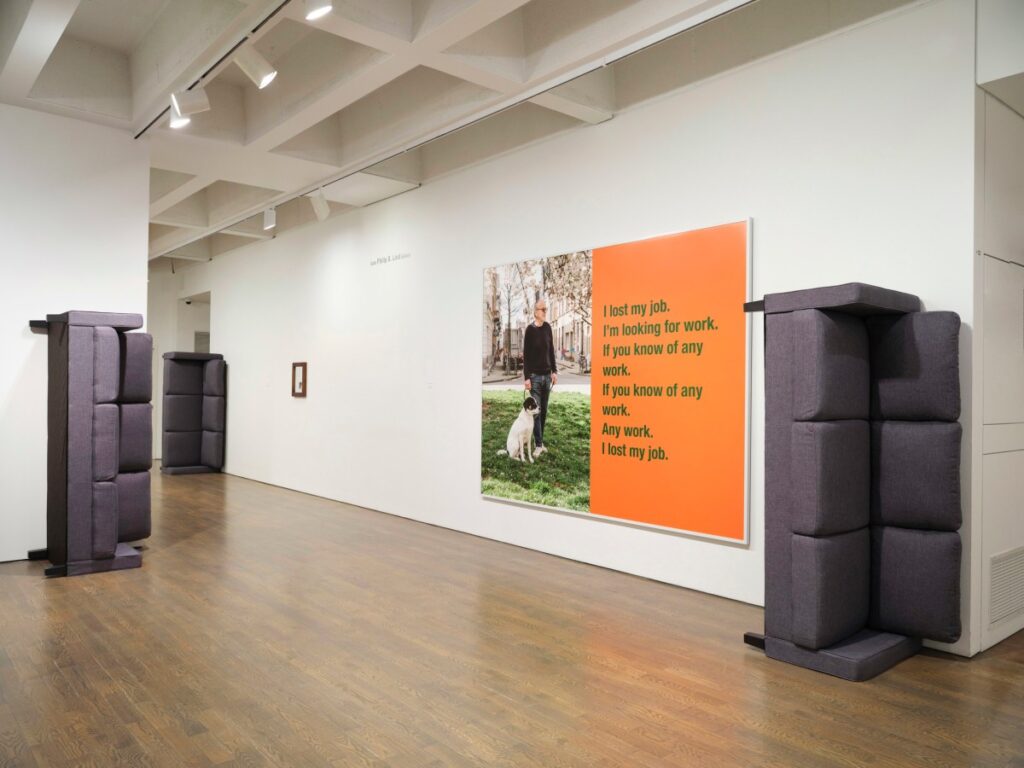Acclaimed Canadian contemporary artist Ken Lum spoke with AGOinsider about death, class, childhood and sofas

Since late June, AGO visitors have been witnessing the challenging and thought-provoking artworks of Death and Furniture – the debut AGO solo exhibition by acclaimed Canadian artist Ken Lum. This small but impactful career survey features works of sculpture, photograph, text and installation, spanning the last four decades of Lum’s practice.
With Death and Furniture, Lum boldly explores the tensions between identity and representation, and challenges the systemic hierarchies of social power differentiated by race, class and gender. The exhibition features his newest body of image-and-text work, Time and Again, which zeroes in on how the pandemic exacerbated people’s feelings of stress and anxiety in relation to labour. In addition, the exhibition includes works from Lum’s Necrology Series (2017 to present), Furniture Sculptures (1978 to present), and Photo-Mirror (1997).
On September 21, Lum will appear at the AGO for a conversation with Sofía Hernández Chong Cuy, Director, Kunstinstituut Melly, and Xiaoyu Weng, AGO Carol and Morton Rapp Curator, Modern and Contemporary Art, about his work.
AGOinsider recently connected with Lum and learned more about his approach to creation, and his ideas about death, class, childhood (and sofas!)
AGOinsider: Both Four French Deaths in Western Canada and Necrology place viewers in front of uniquely crafted obituaries. Can you elaborate on what interests you about the use of obituaries as a lens for examining human identity?
Lum: All my work dating back to the early 1980s is concerned with the question of how individuals come to be human subjects and how they enter into the process of social identity. I’ve always been interested in lives lived, and then in telling a story about each life. Whether through image-text, or portrait logo works, they’re always about somebody. The viewer is offered indicators for reading the depicted or referenced person. A host of questions also open up such as who is this person? Why is that person in distress? Death is related to speculations of the other, because death is nothing if not a marker of a life lived. Death verifies life. Life and death are tethered terms. But my work is fundamentally about telling the story of a life and how that subject was constituted while alive.
I don’t see my fascination with death as a subject as a morbid interest. I have a lifelong habit of reading obituaries …. Read more in AGOinsider, linked HERE.